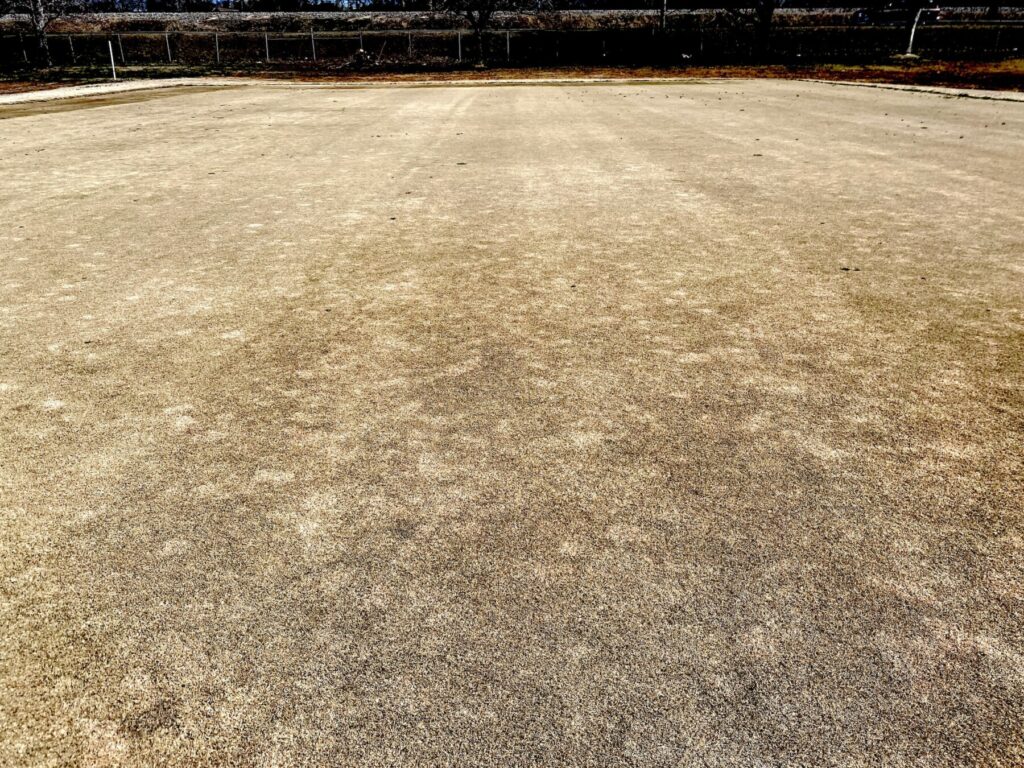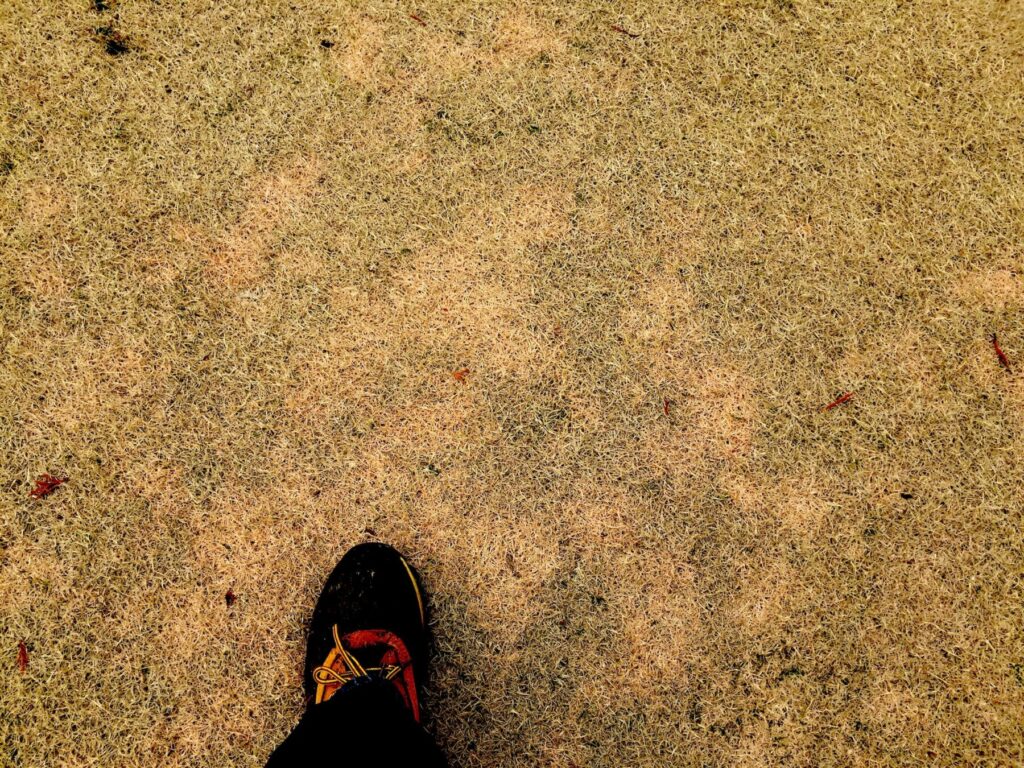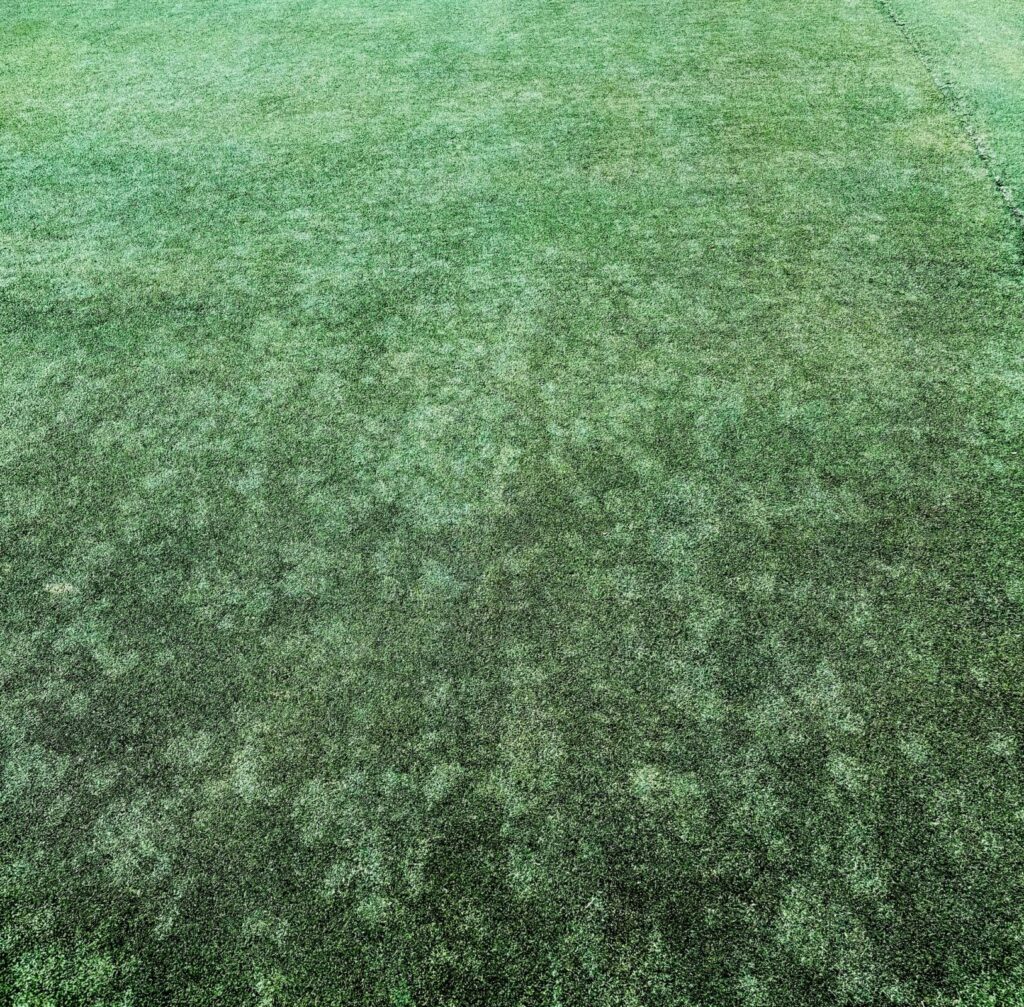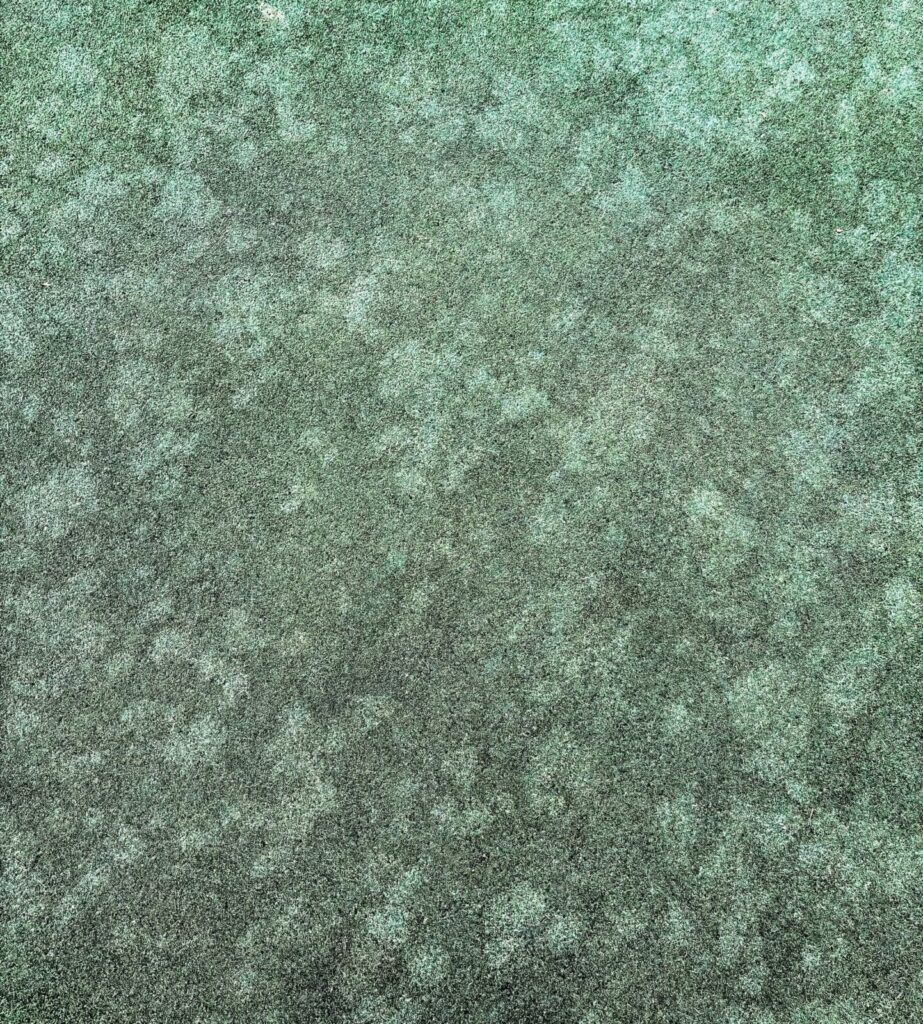We recently received physical and digital samples of dormant or quasi-dormant bermudagrass having patches of grayish-white to cream patches in color. The patches ranged from 4-15 inches (10-40 cm) in diameter and in some cases coalesced to form bigger patches. Similar symptoms were also noted on our “TifEagle” research green located at the University of Georgia-Griffin campus. Patches did not appear to progress further or cause loss of turf, yet the malady was concerning and worrisome. The symptoms are caused by the fungus Limonomyces roseipellis causing “Cream Leaf Blight.”

The Pathogen
Cream leaf blight (CLB) is caused by a specific biotype of Limonomyces roseipellis which is a basidiomycete fungus that causes pink patch. However, the biotype causing CLB lacks the characteristic clamp connection structures and has two nuclei per cell. DNA analysis places this biotype in a unique taxonomical clade.

Environmental conditions
Limited information is available describing the optimal temperatures of CLB-causing L. roseipellis growth, development and infection. The fungus appears to thrive in a wide range of temperatures. L. roseipellis was first described in tall fescue, and on this host the temperatures for infection ranged from 50-90 F (10°C to 32°C). In bermudagrass in Georgia, infection has mostly been observed in late fall when the plant ceases active growth, or in semidormant/dormant turfgrass in early winter. Constant humidity and low fertility appear to be conditions for L. roseipellis infection and growth.

Disease Management
Little information is available regarding the proper management of CLB. The disease is primarily cosmetic with very little damage to the turf. Therefore, on dormant bermudagrass no fungicides are warranted. Anecdotal evidence indicates that when bermudagrass resumes active growth, the fungus ceases colonization of the foliage. While very little information on fungicides is available, in areas where the symptoms are severe and the turfgrass has not entered dormancy (i.e. ultradwarf bermudagrass golf greens) the use of succinate dehydrogenase inhibitor or demethylation inhibitor fungicides in early to late fall have effectively prevented the disease. As a note, in our experience with our experimental TifEagle green the “leave it alone and wait for green-up” policy has worked in the past. However, in years with heavy infections in early winter, the use of basidiomycete-inhibiting fungicides such as flutolanil and azoxystrobin, have proven efficacious in preventing the disease.
